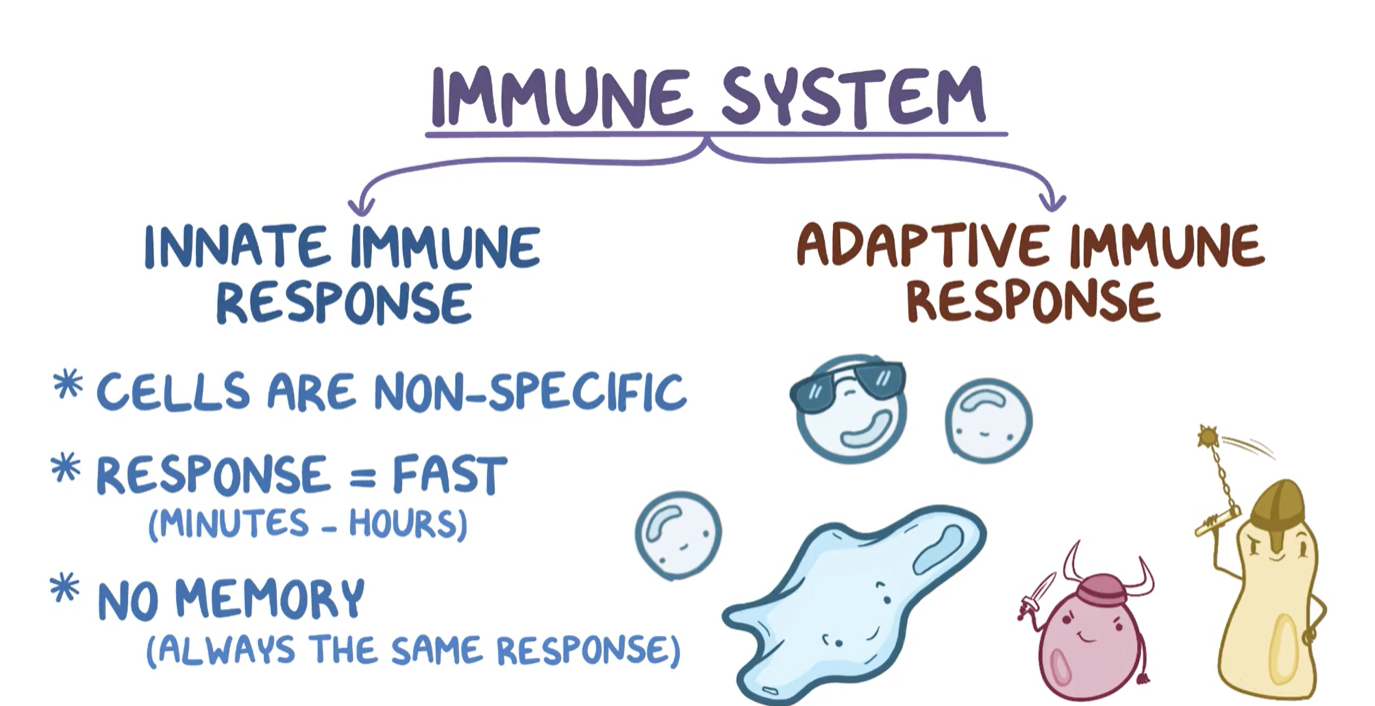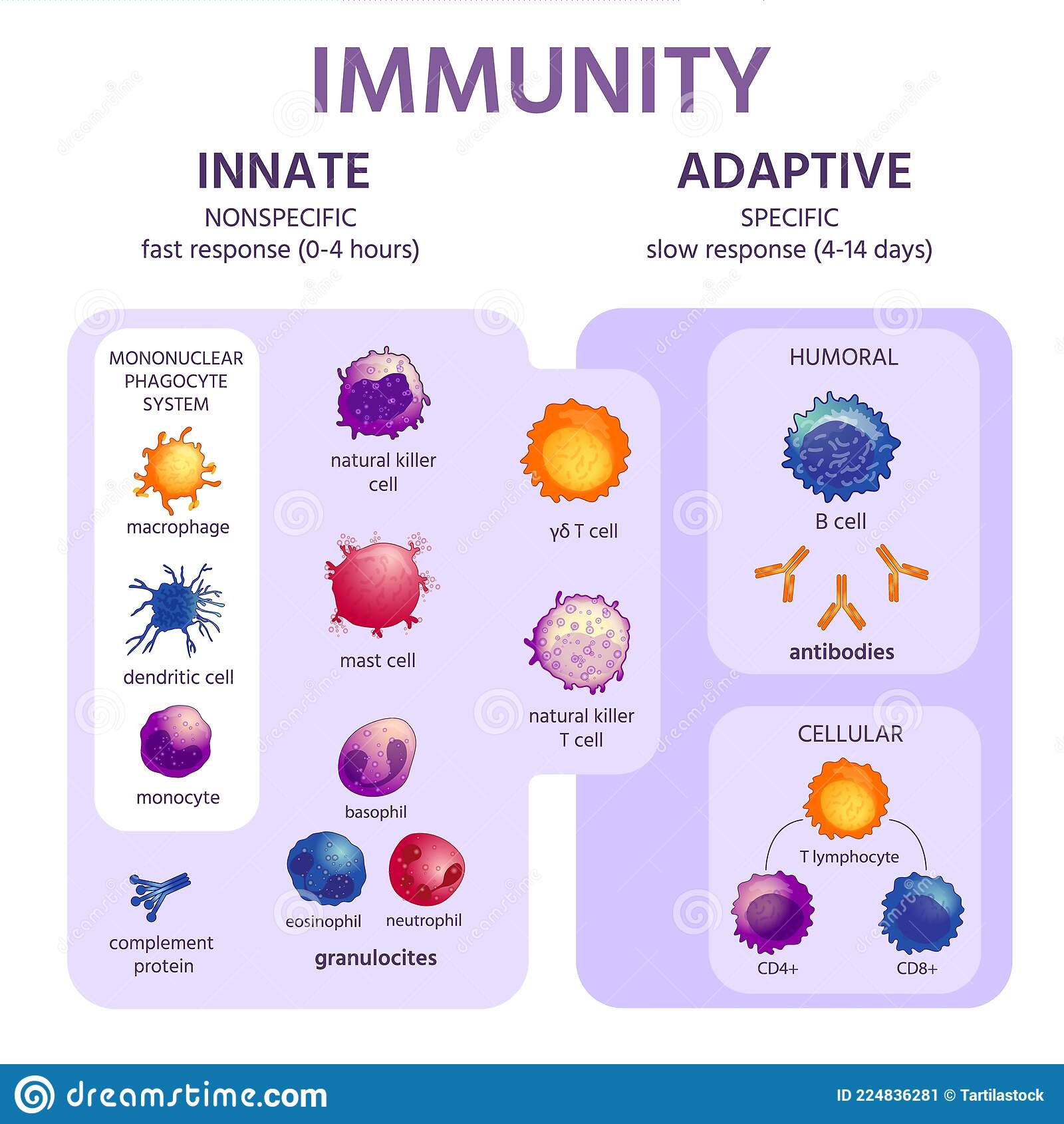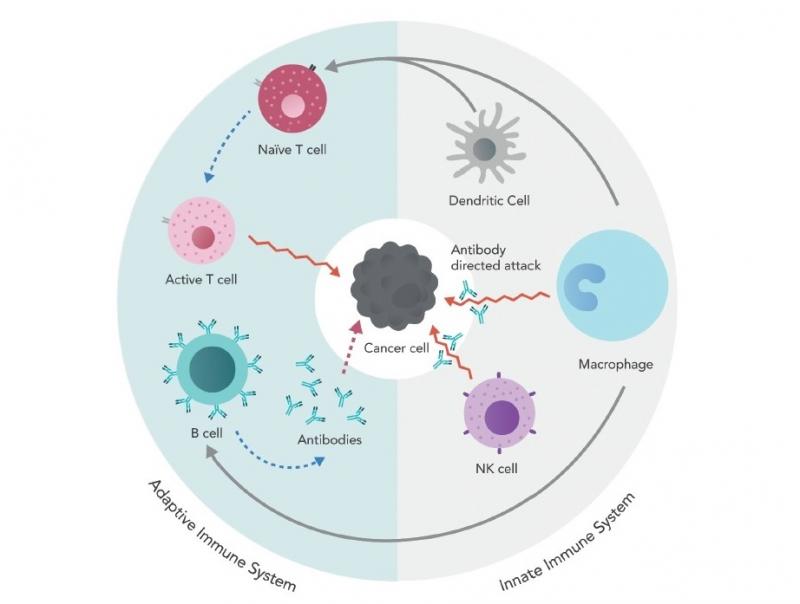Innate Immune System Study Guide
Introduction
The immune system is tricky. At times it is overactive and starts to attack the body, and other times, it is too dormant, and is not capable of defending the invaders. Finding a balance between the two (talk about extreme!) depends on the functioning of the innate immune system. The innate immune system needs to be fine-tuned to know when it should be turned on and when to turn itself off so that it does not cause any collateral damage.
The Immune system and its Two Halves
It may be important to manipulate the immune function. There could be a need to enhance it or suppress it. This rests on our ability to control the innate immune system and the adaptive immune system. There are two immune system types.
Innate immune system
- Innate immunity is our first line of defense. It detects the invaders like bacteria and viruses and senses any trauma or wounds.
- When the innate immune system detects these agents, or in the case of an undesirable event, it activates the cells to attack and destroy the outsider.
- It also gets activated to repair itself. It then informs and modulates the adaptive immune response that follows after the first defense line.
Adaptive immune system
- The adaptive immune system is the second in line and acts towards a specific response.
- It has a specific line of defense, and they are called when the innate immune system desires it to take action.
- After the invader is recognized, the cells multiply and combat it, which causes disease recovery and protects against its return.
Innate Immunity: A Closer Look
Innate immunity is a system that protects against any infection and gets activated as soon as there is any pathogen attack. The innate immune system is made of barriers that aim to keep the viruses, parasites, and bacteria or any foreign particles out from the body, not letting them spread through the body.
The innate immune system includes:
- Physical barriers like skin, respiratory tract, eyelashes, gastrointestinal tracts.
- Bodily fluids like mucous, secretions, gastric acid, bile, etc
- General immune responses like the process of inflammation and non-specific cellular response.
The innate immune system is not specific. It is always general or non-specific immunity, which means identifying non-self or foreign and targeting it. The presence of the antigens and their chemical properties activates the innate immune system.
Innate Immunity: Can it cause disorders?
An inflammatory response is very characteristic of the innate immune system. When the innate immune system misidentifies what it considers ‘dangerous’, it can cause inflammation at an almost fatal level. These are usually the causes of most allergic reactions!
- Disorders like rheumatic arthritis, lupus, and multiple sclerosis are autoimmune conditions where the immune system starts to attack the body cells erroneously.
- Chronic inflammation, which is connected with diabetes and wound trauma, is another overreaction symptom of the immune system.
- Regulating the immune system can detect disease and fight it to improve human health.
Conclusion:
- Our body is exposed to innumerable harmful diseases each day. These are bacteria, viruses, and pathogens.
- Even after such dangerous and harmful exposure, we can always survive and function properly without being sick because of the immune response.
- This is because of our multilayer immune function that lets us work smoothly.
- The innate immune system is the first line of defense against foreign objects. The adaptive or specific immune response then follows this.
FAQs:
1. What are the innate immune system and its function?
The innate or the nonspecific immune system is the defense system with which you were born. It functions to protect you from antigens. It involves barriers that do not let any foreign materials enter your body.
2. What are the components of the innate immune system?
The innate immune system is comprised of physical barriers, anatomical barriers, cellular and chemical barriers, blood proteins, and cells.
3. How does the innate immune system work?
The innate immune system is active right from the moment a child is born. It is inherited. When the innate immune system recognizes any invader, it immediately gets into action. The immune system cells surround and engulf the invader and kill the invader inside the immune system cells.
4. Who has an innate immune system?
The adaptive immune system, or the second line of defense, evolved some 500 million years back and is confined to vertebrates. The innate immune response is found in the vertebrae and invertebrates as well in the plants. It is present at birth and regulates the basic body mechanisms.
We hope you enjoyed studying this lesson and learned something cool about the Innate Immune System! Join our Discord community to get any questions you may have answered and to engage with other students just like you! Don’t forget to download our App to experience our fun, VR classrooms – we promise, it makes studying much more fun! 😎
Sources:
- WHAT IS INNATE IMMUNITY? https://ciiid.washington.edu/content/what-innate-immunity. Accessed 25 Nov, 2021.
- Immune response. https://medlineplus.gov/ency/article/000821.htm. Accessed 25 Nov, 2021.



